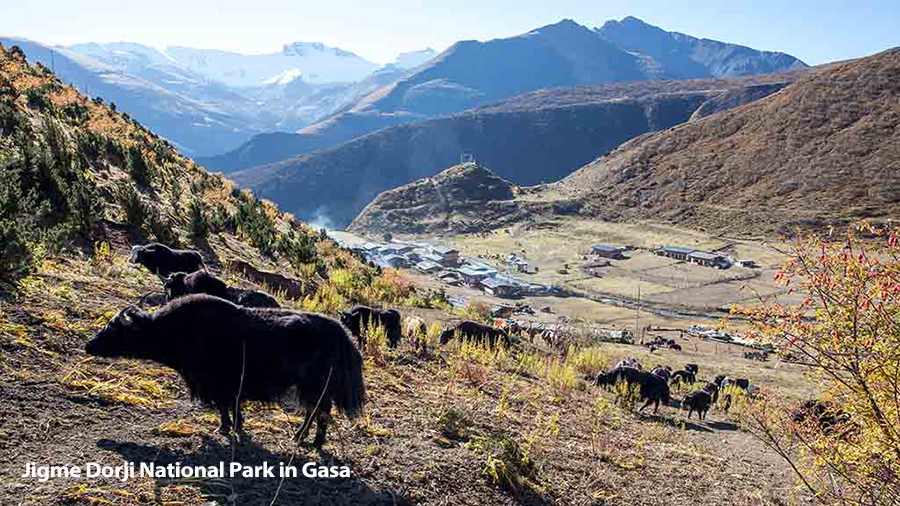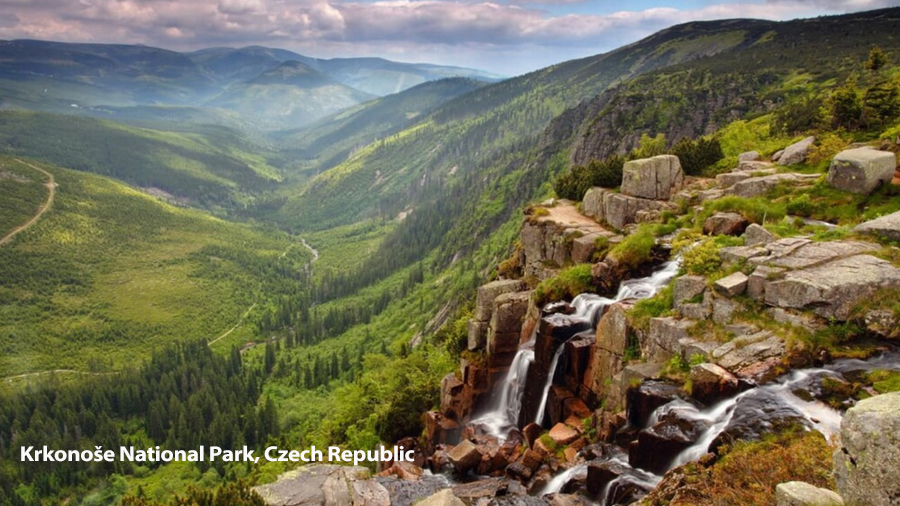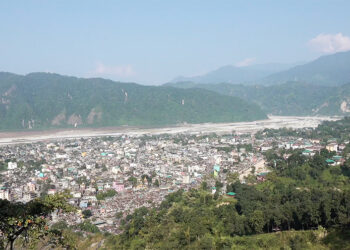 A part of Jigme Dorji National Park in Gasa, one of Bhutan’s oldest national parks, could become the first geopark in the country. Geoparks are special areas that protect important geological sites, promote education, support sustainable development and benefit local communities. To explore this idea, the Department of Forests and Park Services is working with the Czech Republic on introducing the geopark concept at the Jigme Dorji National Park.
A part of Jigme Dorji National Park in Gasa, one of Bhutan’s oldest national parks, could become the first geopark in the country. Geoparks are special areas that protect important geological sites, promote education, support sustainable development and benefit local communities. To explore this idea, the Department of Forests and Park Services is working with the Czech Republic on introducing the geopark concept at the Jigme Dorji National Park.
Unlike traditional protected areas, geoparks focus not only on preserving nature but also on connecting people to their landscapes through culture, history, and livelihoods. They create income opportunities, education, while protecting nature.
 For example, Krkonoše National Park, a popular geopark in the Czech Republic, attracts visitors with its unique mountains, glaciers, landscapes and rich biodiversity. Local communities earn by offering guided hikes and ski trips and selling local products while boosting small businesses. The tourism revenues help preserve the park while creating a sustainable benefit for both communities and visitors.
For example, Krkonoše National Park, a popular geopark in the Czech Republic, attracts visitors with its unique mountains, glaciers, landscapes and rich biodiversity. Local communities earn by offering guided hikes and ski trips and selling local products while boosting small businesses. The tourism revenues help preserve the park while creating a sustainable benefit for both communities and visitors.
“Geopark can serve for local people to understand how all these beautiful phenomena in the landscape were created by very long-term processes, tectonic movement of the plates, various volcanoes, and sedimentation material by rivers. So, step by step, the landscape was created and finally made fantastic scenery for visitors,” said Martina Paskova, Member, UNESCO Global Geoparks.
“Like the geoparks, they look after the international connection for the sustainable development, as well as education and ecotourism. So, these activities are currently implemented in our protected area system. And with the formation of geoparks, I think we can increase our collaboration with international national parks and protected areas. So with that, we can get a lot of technical support, as well as we can share our best practices internationally,” said Lungten Dorji (PhD), Senior Forestry Officer, DoFPS.
A member of the United Nations Educational, Scientific and Cultural Organisation (UNESCO) from the Czech Republic said the initiative aims to create opportunities for communities living within and around the park by encouraging geo-tourism. Geotourism is a form of tourism that focuses on exploring a place’s landscapes and natural features to understand how it was formed.
“Geotourism, which is the economic activity of Geopark, has very potential for the area because it’s mainly sustainable tourism, educational tourism, which is trying to not only educate local people, but also tourists, in a popular way, which is entertaining. You can play sports, and you discover that there is something interesting. You can climb, but you can understand which kind of rocks you are climbing. You can go canoeing in the river, but you can understand why the canyon is carved like it is,” added Martina Paskova, Member, UNESCO Global Geoparks.
The concept of a geopark, if realised in Bhutan, could open new avenues for research, education, and sustainable tourism while ensuring that conservation remains at the heart of development.
It also marks an important step in connecting Bhutan to the global network of UNESCO Global Geoparks, sites recognised for balancing the preservation of natural heritage with the well-being of local communities. Currently, there are 229 UNESCO Global Geoparks in 50 countries.
 Samten Dolkar
Samten Dolkar
Edited by Sonam Pem








